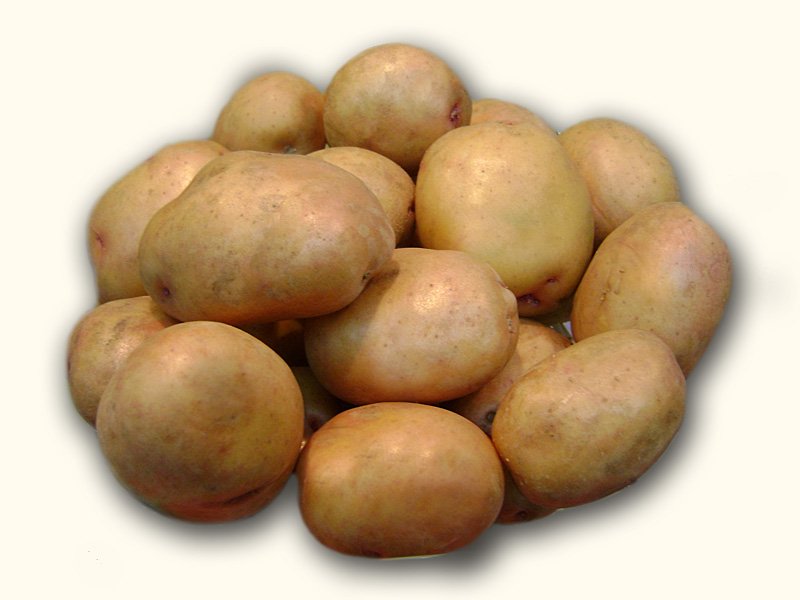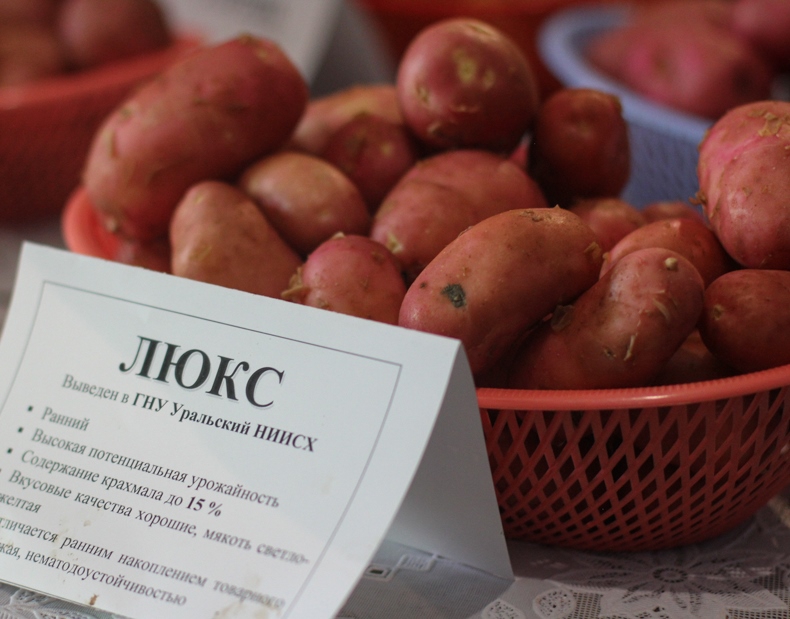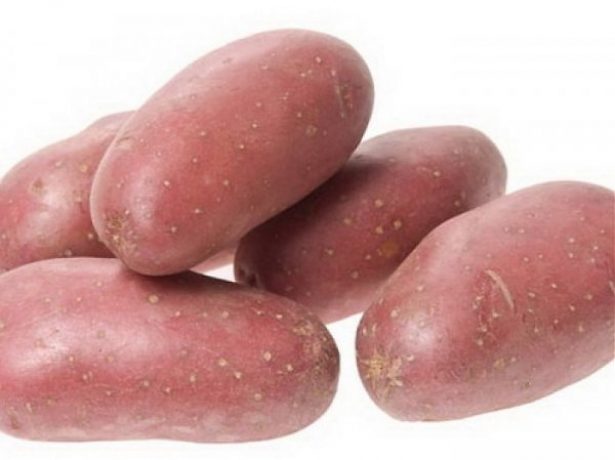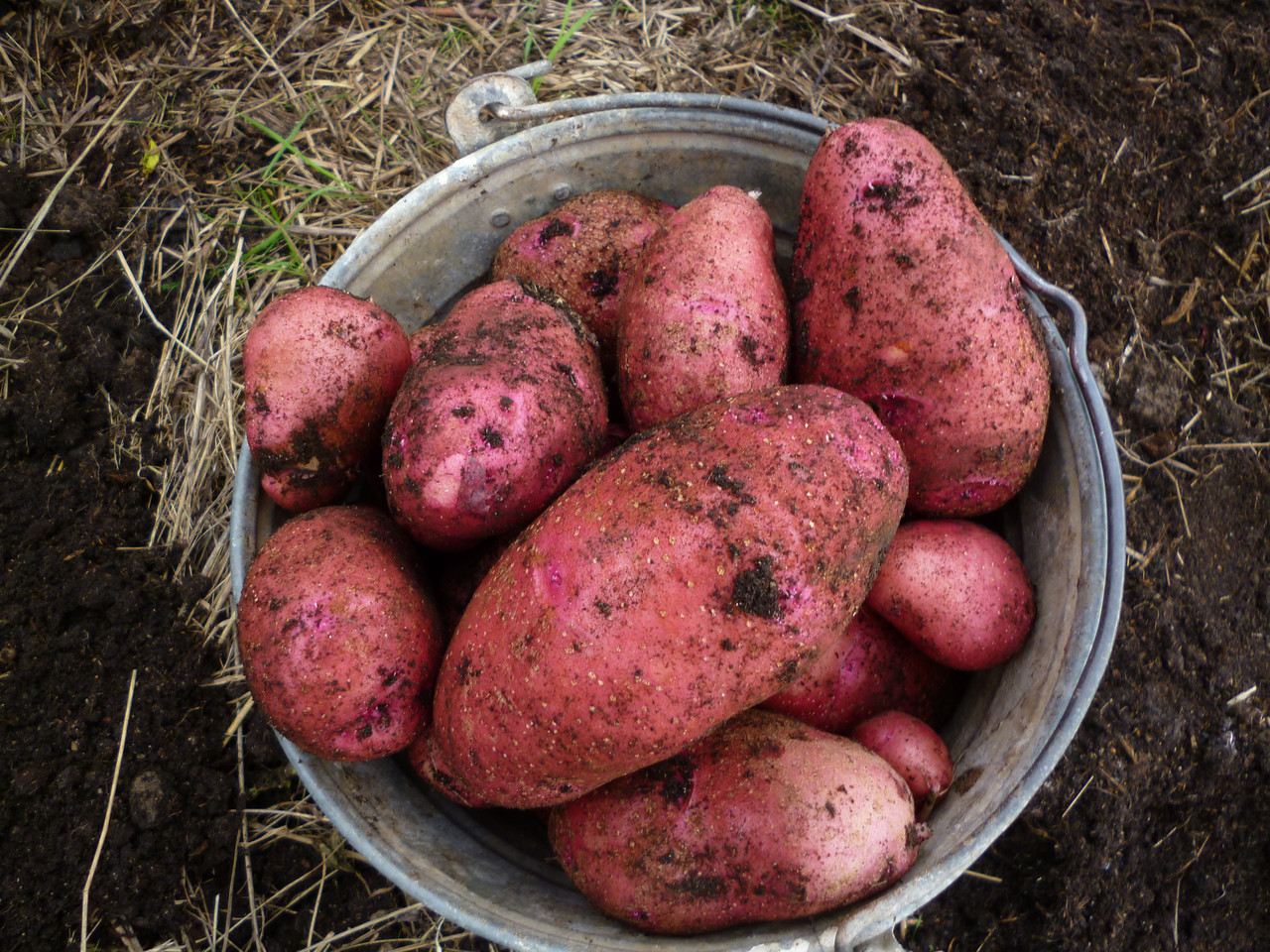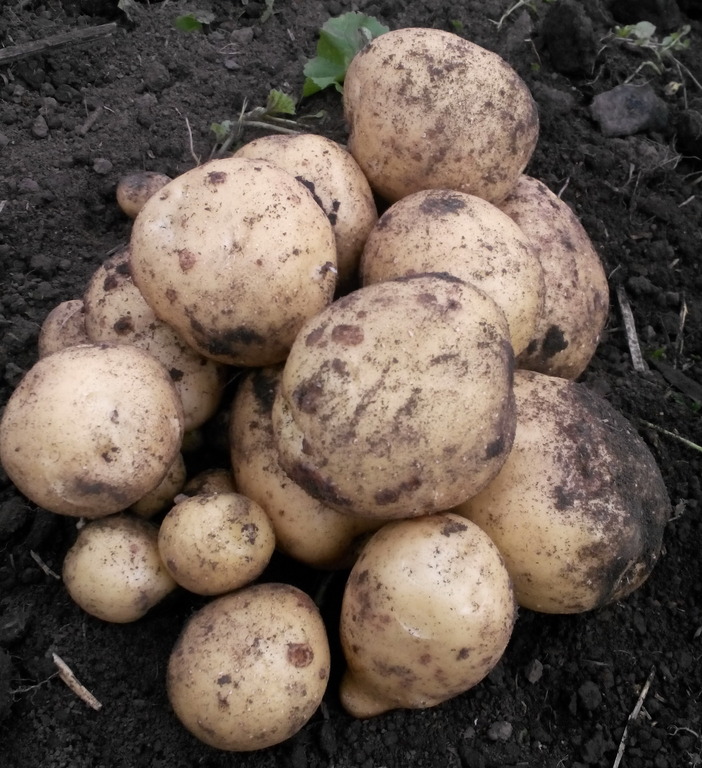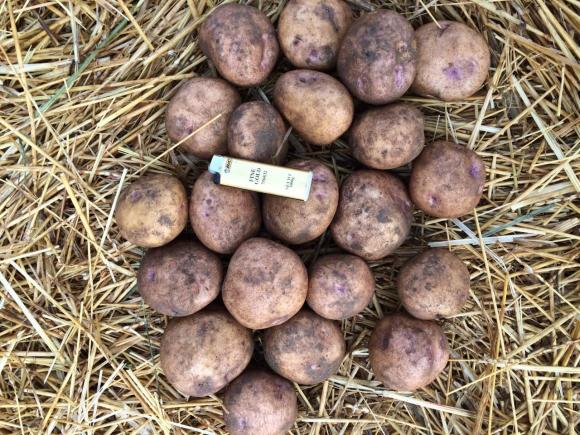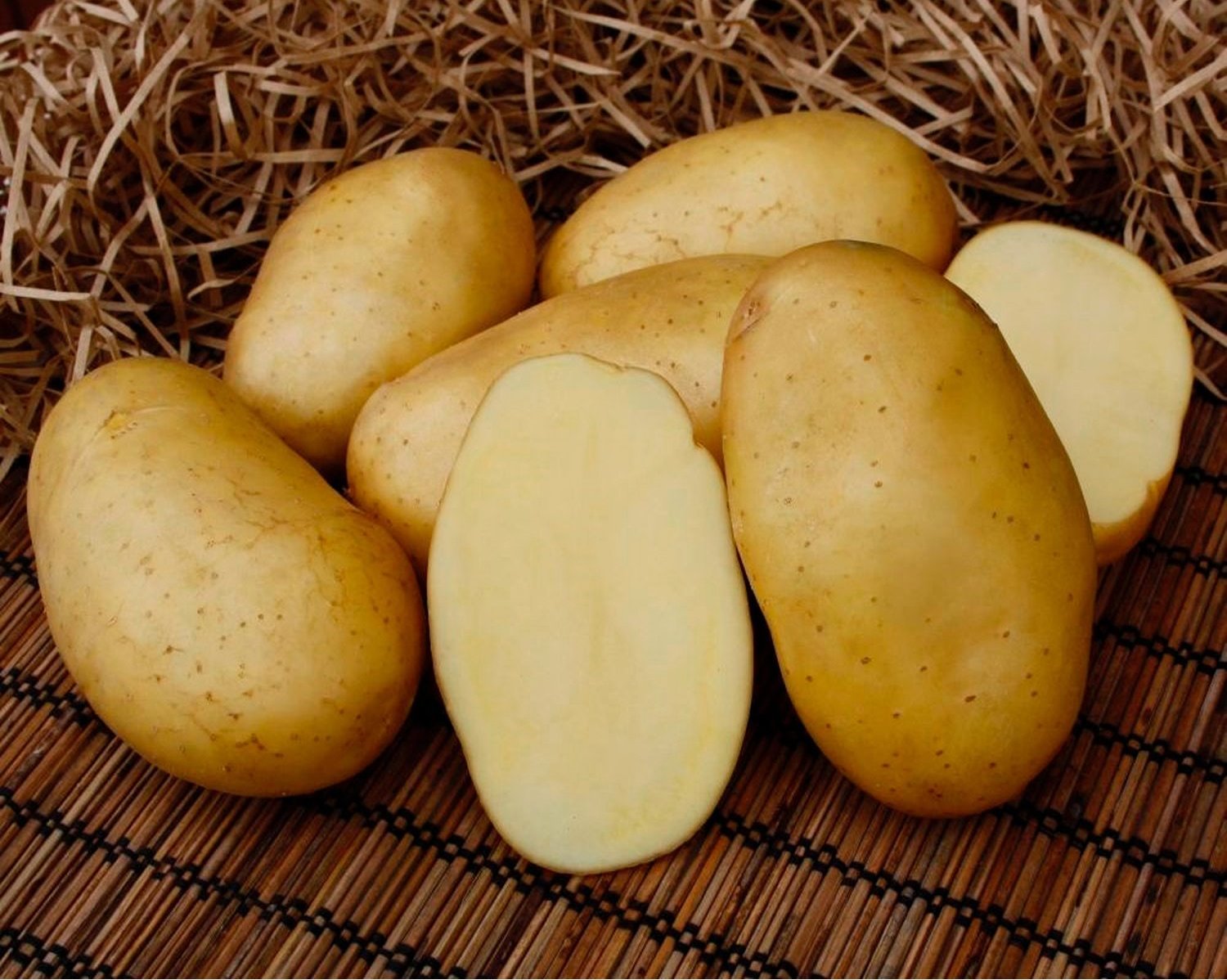Content:
If you believe the statistics, then potatoes occupy almost the first place in the diet of compatriots. Some summer residents on their plantations grow exclusively this crop. Centuries have passed since the nutritious tuber crops from South America arrived in Europe. During this time, breeders have managed to bring out a large variety of varieties of starchy vegetables.
Features of the variety
Breeze belongs to medium early tubers, which makes it possible to grow potatoes in many regions of the country. Undemanding neither to the types of soil, nor to the conditions of agricultural technology. The description of the variety will help to draw the attention of newly-made farmers to the potato variety Breeze.
Specifications
| Signs | Description |
|---|---|
| Tops | Wide, medium height. The bush produces reddish-purple flowers and small green balls with seeds |
| Tubers | Oval, large, yellow inside and outside. The peel is smooth, the eyes are shallow. Average weight - 120 g. Quantity per bush - 8-12 pcs. Starch in fruits contains no more than 16% |
| Consumer qualities | High gustatory index, estimated at 7 points. Poor digestibility, therefore not suitable for puréing |
| Maturation | Medium early variety - tubers ripen about 65-80 days after planting |
| Yield | Up to 620 c / ha with good agricultural technology and 480 c / ha with minimal maintenance |
| Storage | Keeping quality is high - 97%, which ensures long-term storage |
| Immunity | Average resistance to scab, late blight. Doesn't require much effort in the fight against insects |
Agricultural engineering rules. The quality of not boiling water makes the Breeze variety an excellent component for preparing various dishes. It is also noteworthy that potatoes do not lose their color when cooked. Each feature of the variety is already a reason to start breeding it.
It is not difficult to grow seed breeze potatoes if you adhere to the elementary conditions of agricultural technology. Basically, they are standard and apply to many varieties:
- you should not plant tubers in the same place - you need to withstand a 3-year crop rotation;
- planting begins when the layer of earth to a depth of 12 cm warms up to 7 degrees Celsius, so the sowing period falls on the last decade of April or the first of May;
- processing of the site, carried out in the fall, is mandatory: removal of weeds, digging, application of organic fertilizers;
- repeated presowing soil digging in spring;
- pre-treatment of seed material with disinfectants and growth stimulants;
- on the bottom of the pits (trenches), a substrate of ash and humus is laid;
- tubers are sent to the ground after sprouting the eyes.
Care features
Growing the Breeze variety, you don't have to worry about the yield - even with poor care, they get a good result. Having paid maximum attention to agricultural technology, summer residents can count on high fertility of potato bushes. This is achieved by observing the following rules:
- it is obligatory to control weeds, which not only take away nutrients from the crop, but also spread many diseases;
- to get large tubers, it is recommended to apply fertilizers to the plantation 3 times per season: rotted manure, bird droppings (guano) and wood ash;
- if the tops develop poorly, they resort to foliar feeding, spraying potato beds with nutrient solutions;
- it is important not to let the soil dry out, especially during the period of budding and active flowering; it is recommended to arrange irrigation grooves along the rows or use sprinklers;
- after watering, rains and during weeding, the row spacings are loosened so that oxygen can freely penetrate to the roots.
One of the keys to a high-quality harvest is the timely harvesting of tops. You shouldn't wait for it to fall. The tops are mowed at the first sign of wilting. The tubers still need time to ripen, so it is better to harvest the crop 2 weeks after mowing.
Wellness activities
In view of the average resistance of the variety to some diseases, preventive measures should not be ignored by spraying with insecticides during the budding period. So that such processing does not have a negative effect on taste, it is better to use not chemicals, but folk remedies.
Breeze has weak immunity against scab, late blight and is exposed to nematode invasion. In order to preserve the harvest, the main efforts should be focused on combating them.
The main problems of the potato variety Breeze
| Disease (pest) | Remedies |
|---|---|
| Scab can destroy up to 70% of the crop. Those tubers that can be saved lose their ability to reproduce (they do not form eyes) | · Carry out pre-planting dressing of tubers with fungicidal preparations; |
| · With the help of fertilizers (ammonium sulfate or superphosphate), the low-acid reaction of the soil is maintained; | |
| Planting cruciferous, grains, or legumes next season in potato beds will help get rid of scab bacteria | |
| Late blight is the main scourge for nightshades. A pathogenic fungus, once on the site, quickly infects the culture | · Much depends on the preventive treatment of the bushes with fungicides; |
| · Weed control will prevent disease from developing on the plantation; | |
| When preparing seed, tubers with signs of disease should be discarded immediately | |
| The activity of the nematode just coincides with the ripening period of the Breeze tubers, so there is a high risk of pest attacks. | · Fruits prepared for planting are thoroughly washed and disinfected in potassium permanganate; |
| The potato parasite eats up roots and leaves. As a result, the tubers are small or not tied at all. | · Having found diseased bushes, they are dug up and destroyed without regret; |
| · The land on the plantation is treated with Urea or Heterophos; | |
| Nematode cysts, which can store eggs in the ground for up to 10 years, can be destroyed if legumes or corn are planted in the beds after potatoes |
Updating With other diseases and pests, Breeze can cope on its own, if poor agricultural technology does not affect the decrease in immunity.
Having engaged in breeding this variety, you should take into account that its qualities will be maintained for 4 years. Then the seed material loses its properties, which leads to low yields and crushing of the fruit. Tubers lose not only their presentation - their taste worsens.
In the 5th year, farmers renew seed potatoes by buying them on the side. The more experienced have learned how to rejuvenate varieties using what is at hand. The breeze reproduces perfectly by seeds taken from the balls (they are formed on the bush after flowering), and vegetatively.
Seed renewal stretches over several years, so summer residents are busy harvesting material in advance (seeds are perfectly stored for 10 years). Sowing is carried out in the second year in spring, and in the fall, small nodules are obtained, which will become planting material in the 3rd season.
For vegetative propagation, parts of tubers, layering, division of bushes, seedlings are used. Such methods allow you to immediately get good products for the table, but after 5 years you will still have to update the seed tuber.
Advantages and disadvantages of the variety
Having studied the characteristics of Potato Breeze, many summer residents will want to breed a variety on their site. A large list of advantages contributes to this:
- the variety has a stable high yield;
- it has an excellent sweetish taste and an attractive presentation of the fruit;
- suitable for all kinds of processing;
- The breeze is resistant to damage, so a mechanized method of harvesting tubers can be used;
- fruits have high transportability, which allows transporting a large number of tubers over a long distance;
- due to its high keeping quality, it does not lose its tasting qualities during long-term storage;
- the variety does not require special conditions for preservation - it is enough to maintain a temperature in the basement of about 2-5 degrees Celsius and minimum humidity; it is better to use wooden boxes with ventilation under the potatoes in order to exclude the development of fungus;
- leaves on tops are not subject to curling, which interferes with photosynthesis;
- high resistance to mosaics (banded and wrinkled), as well as potato crayfish.
As for the boil-over, Breeze has it weak, and some consumers consider this an advantage, for others this property is a minus. The real disadvantage of the variety is its poor resistance to nematodes, late blight and scab. But with proper agricultural technology, they can be avoided.
Seed Breeze potatoes, due to their characteristics, are excellent for growing both in their summer cottage and in a reputable farm. What makes the variety popular is the combination of unpretentiousness to growing conditions and stability in fruiting, as well as good tasting and commercial qualities.
Each property combined allowed Breeze to be in the TOP list of potato varieties planted on Russian plantations. This was also facilitated by the good adaptability of the culture to various weather and climatic features of the country's regions.


